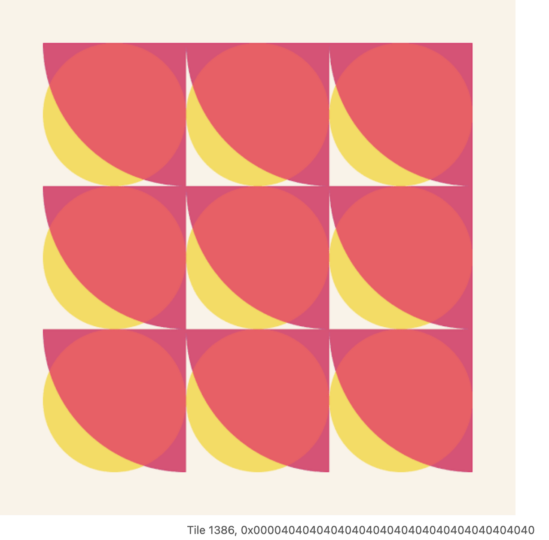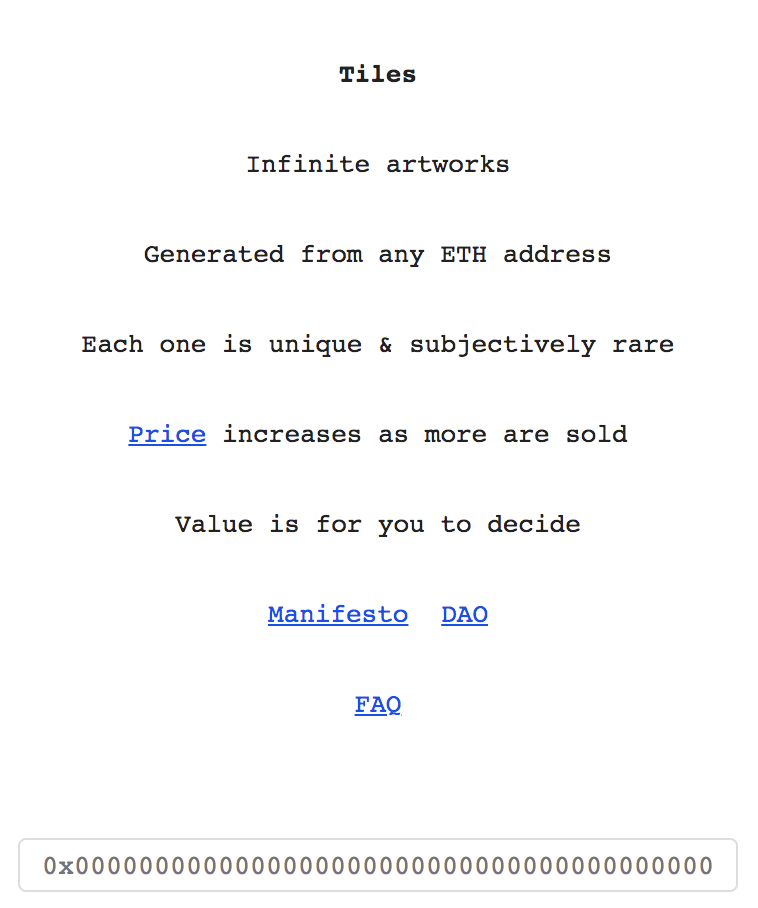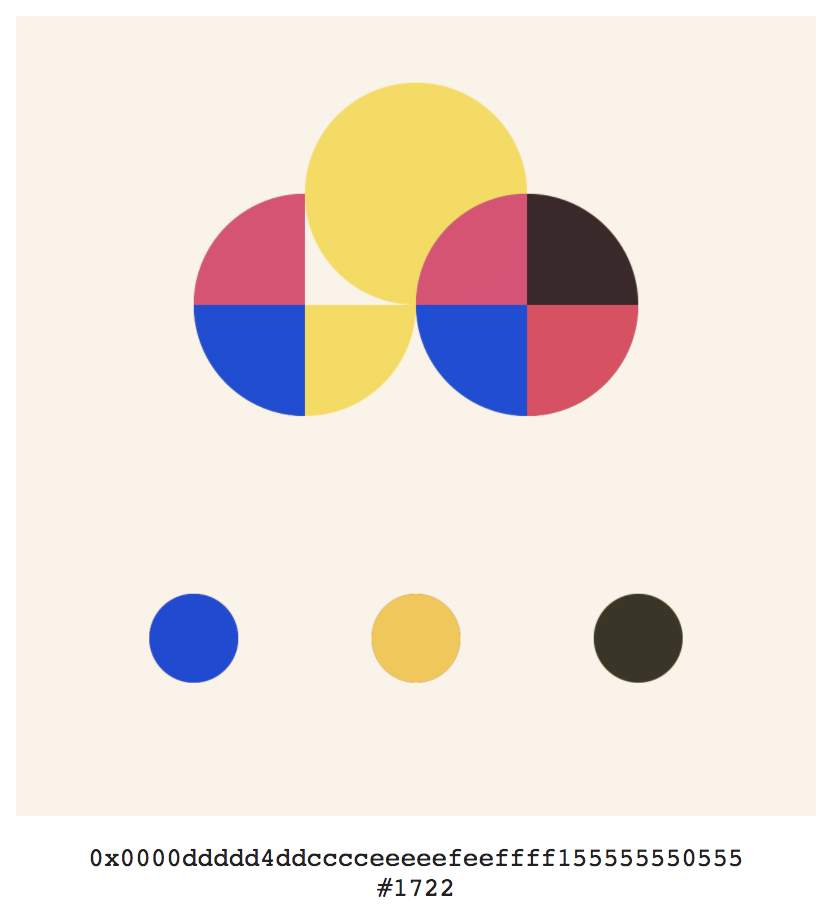Subjectively rare: How Tiles art changed my perception of value in the NFT space

Wallet-stalking pays off
If you’ve been in the NFT space for a while, you’ve probably done it at least once. Wallet stalking. It feels a bit voyeuristic at first, like the proverbial peek at someone else’s medicine cabinet. Except instead of raising a brow at a curious tube of creams might get a glimpse of someone’s jpeg-investment portfolio.
Wallet stalking is a great way to discover new art and artists — especially considering that the most popular NFT platforms still need better discovery mechanisms for those that want to do more than ape into the latest pfp project. It was during a stalking sesh on OpenSea one evening that I stumbled upon a collection called Infinite Tiles. I saw an assortment of abstract art: ecruish squares with seemingly random mixes of colorful shapes layered on a 9×9 grid.
“Unique & subjectively rare”
OpenSea shows no properties for the tiles, so there’s no filtering metadata for specific traits or rarity levels. I picked two tiles to buy, purely for the aesthetic joy they brought me. Only after my purchases did I dive deeper to find the really exciting details of the project. When I landed on Tiles.art I was struck with how different it felt from so many other projects. These 8 sparse, deliberately spaced lines give shape to the project.

The minimal website belies the vast possibilities contained within the project. A reiteration, perhaps, of the intention to allow participants to make their own value judgments. A few lines from the Manifesto stood out to me:
Mathematically, all Tiles are equally rare. They are all fashioned from the same assortment of simple shapes and colors, but each in a unique way. In that sense, Tiles are a bit like us.
The irony is that this “equally rare” approach is itself rare in a space where rarity so often confers value. It was a refreshing left turn from the scarcity chase, and from the gaggle of anthropomorphized cartoon animals that had begun to dominate my awareness of the NFT community. While I do enjoy some of those projects, price speculation tends to make up too much of the conversation, which leaves me feeling uninspired and rather cynical about NFTs and about crypto, in general.
“Value is for you to decide”
What really hooked me about Tiles was learning that minting is a creative act. You get to shape the art by inputting a unique string of 42 hexadecimal characters (that is, any combo of numbers 0 through 9 and letter a through f). ETH addresses fit this criteria, of course, and when you input one you get what some in the Tiles community playfully call a chaos tile.

It’s somewhat like the roll-of-the-dice feeling you get when minting other generative NFTs, except that in this case you can reverse engineer each die and decide how they fall. In the above example you see what results from inputting the address printed beneath the tile. Once input an address and see the result you can decide to mint or not. The ability to see what a tile will look like before purchasing is helpful and will grow in usefulness as the price to mint is on a bonding curve. At the time of writing, the cost to mint a tile is 0.16 ETH. This price will double once the supply hits 3200 tiles.
You can also use an ETH address as a starting point for your own design. Say, for example, you really like that blue-trimmed yellow circle in the top right of the tile. You can tinker with the characters of the address to discover what makes that shape/color combo and replicate or tweak in the tile. I value this puzzle aspect of Tiles nearly as much as the resulting tiles. The creative spark that ignites from discovering a code, then applying it to your own creation is very valuable to me.

While I appreciate the chaos tiles created from ETH addresses, I tend to prefer to manually design and mint what the community calls “order” tiles. The perfect symmetry is soothing to my chronically tangled mind. However, my very favorites are the ones I stumble upon when seeking perfection, but get something just slightly off kilter that takes the tile from pleasant to electric. This is another way, as suggested by the Manifesto, Tiles are kinda like people.

Art + Community
It was nice to find something visually interesting on OpenSea; then it was energizing to find something mentally stimulating in the puzzle aspect of designing a tile. Finally, it’s been socially thrilling to find that owning a tile grants access to a DAO. And minting tiles earns you TILE tokens, which give you the ability to vote in DAO decisions. I’ve been watching the proliferation of DAOs this year with interest, but from the sidelines, not knowing just how or where to jump in. As it turns out, simply following my aesthetic impulses helped me finally crack a door open. Having an authentic connection to art has a magical way of leading us to people, places, things we should pay attention to. So it’s probably no coincidence that the stated goals of the TileDAO resonate with what I currently value most.
TileDAO exists to reinvest revenue from the Tiles primary sale back into the creators’ economy… The goal in forming this DAO is to amass inspiration, ideas, and opinions from everyone who has bought into this project, in order to best determine how the funding should be put to use.
Above all else, art is a pillar of community.
The TilesDAO Discord is active and welcoming. Among its most encouraging members is creator of Tiles, @peripheralist. Peri, as the artist is known, has more exciting generative projects in the pipeline, which are shared openly for feedback. https://littlescholarsnyc.com/ I’ve only just started exploring what it means to take part in TilesDAO, but one thing that I’m very excited about is that the community has prioritized funding IRL art projects, like this mural in Burlington, NC by artist @nonperishable.

Not only is this a great way to support public art, but it’s a foil for my anxieties about the internet eating the world. As intrigued as I am by the metaverse, I don’t ever want it to replace the glory of going outside, touching the dirt, walking through old buildings, seeing the humanity behind the avatars.
The spectacular rise in NFTs this year has shown how much more common art appreciation is than has been implied by the traditional art markets. I believe it’s possible for decentralization technologies to further distribute participation in value markets of all types. And as that happens we will see a shift in what is known as valuable and why.
Feel free to stalk my wallet at forty4.eth. It’s not exactly a curated experience, so you may want to, instead, follow my tweets @obielledge where I often gush about my favorite NFTs projects and sometimes tweet about astrology or the weather in Asheville, NC.












